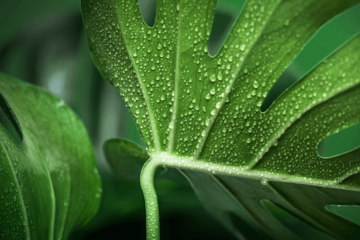Results for "agri"
93 Results
African Fertilizer and Agribusiness Partnership (AFAP) is a platform for knowledge and experience exchange on the importance of Agricultural Technological Innovation for food security and as a catalyst to boost productivity and economic growth on the African continent. Focuses on entrepreneurship, innovation, and education. It is designed specifically for AGRISME Entrepreneurs and aspiring entrepreneurs. Ref: http://events.r20.constantcontact.com/register/event?oeidk=a07eifrlae2a9592f0f&llr=m5euwduab
By:
rupali
Tuesday, Aug 24, 2021
EDUCATION
No Preview Available
Leave a comment
Agriculture is the art and science of cultivating the soil, growing crops and raising livestock. It includes the preparation of plant and animal products for people to use and their distribution to markets. Agriculture provides most of the world's food and fabrics.
By:
tajsvini rajesh kamthe
Wednesday, Aug 18, 2021
CULTURE AND SOCIETY
Leave a comment
https://aap-qa.apps.venturit.org/playlist/agriculture-wheat-species-of-cereal-grasses-of-the-genus-triticum
By:
Rupsssssssssssssssšssś Mukharjeeeeeeeeeeeeeeeeeeeeeeeeeeee
Tuesday, Aug 10, 2021
YOUTH EMPOWERMENT
+1
No Preview Available
Leave a comment
https://aap-qa.apps.venturit.org/pathway/earth-planet-in-the-solar-system
By:
Rupsssssssssssssssšssś Mukharjeeeeeeeeeeeeeeeeeeeeeeeeeeee
Tuesday, Aug 10, 2021
AGRI-FOOD SYSTEMS
+1
No Preview Available
Leave a comment
https://aap-qa.apps.venturit.org/Opportunities/Opportunity_details/agricultural-products-is-wheat
By:
rupali
Friday, Jul 23, 2021
HEALTH AND NUTRITION
No Preview Available
Leave a comment
The designation of species originates in taxonomy, where the species is the fundamental unit of classification recognized by the International Commission of Zoological Nomenclature. Every species is assigned a standard two-part name of genus and species. The genus is the generic name that includes closely related species; the gray wolf, for example, is classified as Canis lupus and is a close relative of the coyote found in North America and designated as Canis latrans, their systematic relation indicated by their sharing the same genus name, Canis. Similarly, genera that have shared characters (or traits) are classified in the same taxonomic family; related families are placed in the same order; related orders are placed in the same class; and related classes are placed in the same phylum.
By:
rupali
Wednesday, Jul 21, 2021
AGRI-FOOD SYSTEMS
+1
Leave a comment
The study of disease is called pathology. It involves the determination of the cause (etiology) of the disease, the understanding of the mechanisms of its development (pathogenesis), the structural changes associated with the disease process (morphological changes), and the functional consequences of those changes. Correctly identifying the cause of a disease is necessary to identifying the proper course of treatment.
Ref: http://www.aptimize.com/
By:
rupali
Monday, Sep 20, 2021
AGRI-FOOD SYSTEMS
+2

Leave a comment
In populations of finite size, the genetic structure of a new generation is not necessarily that of the previous one. The explanation lies in a sampling effect, based on the fact that a subsample from any large set is not always representative of the larger set. The gametes that form any generation can be thought of as a sample of the alleles from the parental one. By chance the sample might not be random; it could be skewed in either direction. For example, if p = 0.600 and q = 0.400, sampling “error” might result in the gametes having a p value of 0.601 and a q of 0.399. If by chance this skewed sampling occurs in the same direction from generation to generation, the allele frequency can change radically.
By:
rupali
Monday, Jul 19, 2021
AGRI-FOOD SYSTEMS
+1
Leave a comment
https://aap-qa.apps.venturit.org/AAPBridge/groups/study-and-research-web-and-mobile-application/stories/natural-language-interface
By:
rupali
Monday, Jul 19, 2021
AGRI-FOOD SYSTEMS
No Preview Available
Leave a comment
Species, in biology, classification comprising related organisms that share common characteristics and are capable of interbreeding. This biological species concept is widely used in biology and related fields of study. There are more than 20 other different species concepts, however. Some examples include the ecological species concept, which describes a species as a group of organisms framed by the resources they depend on (in other words, their ecological niche), and the genetic species concept, which considers all organisms capable of inheriting traits from one another within a common gene pool and the amount of genetic difference between populations of that species.Ref: species | Definition, Types, & Examples | Britannica
By:
rupali
Monday, Jul 19, 2021
AGRI-FOOD SYSTEMS
+2

No Preview Available
Leave a comment
Garden asparagus, the most economically important species of the genus, is cultivated in most temperate and subtropical parts of the world. As a vegetable, it has been prized by epicures since Roman times. It is most commonly served cooked, either hot or in salad; the classic accompaniment is hollandaise sauce. In 2018 the world’s leading producers of asparagus were China, Peru, Mexico, Germany, and Thailand. Commercial plantations are not undertaken in regions where the plant continues to grow throughout the year, for the shoots become more spindly and less vigorous each year; a rest period is required. Where the climate is favourable and with proper care, an asparagus plantation may be productive for 10 to 15 years or longer. The best soil types for asparagus are deep, loose, light clays, with much organic matter, and light sandy loams. Asparagus will thrive in soils too salty for other crops, but acidic soils are to be avoided. The asparagus cutting season varies from 2 to 12 weeks, depending on age of the plantation and on climate.
By:
rupali
Friday, Jul 16, 2021
AGRI-FOOD SYSTEMS
+2

Leave a comment
The vegetative body of vascular plants is adapted to terrestrial life in various ways. In addition to vascular tissue, the aerial body is covered with a well-developed waxy layer (cuticle) that decreases water loss. Gases are exchanged through numerous pores (stomata) in the outer cell layer (epidermis).
By:
Edwin Castel
Thursday, Jul 15, 2021
AGRI-FOOD SYSTEMS


Leave a comment